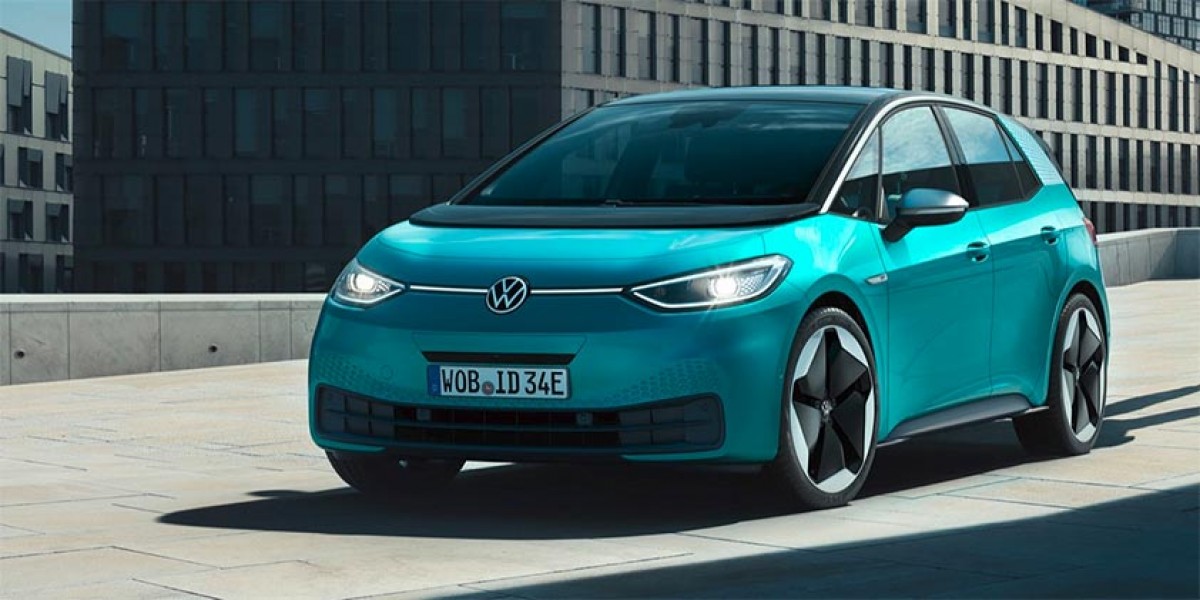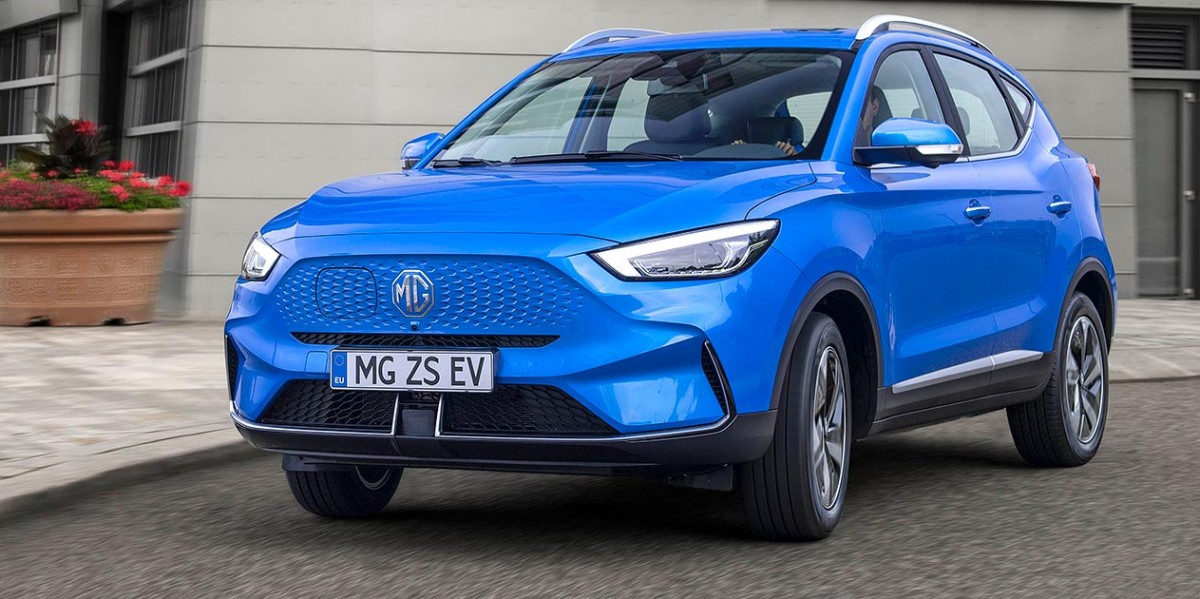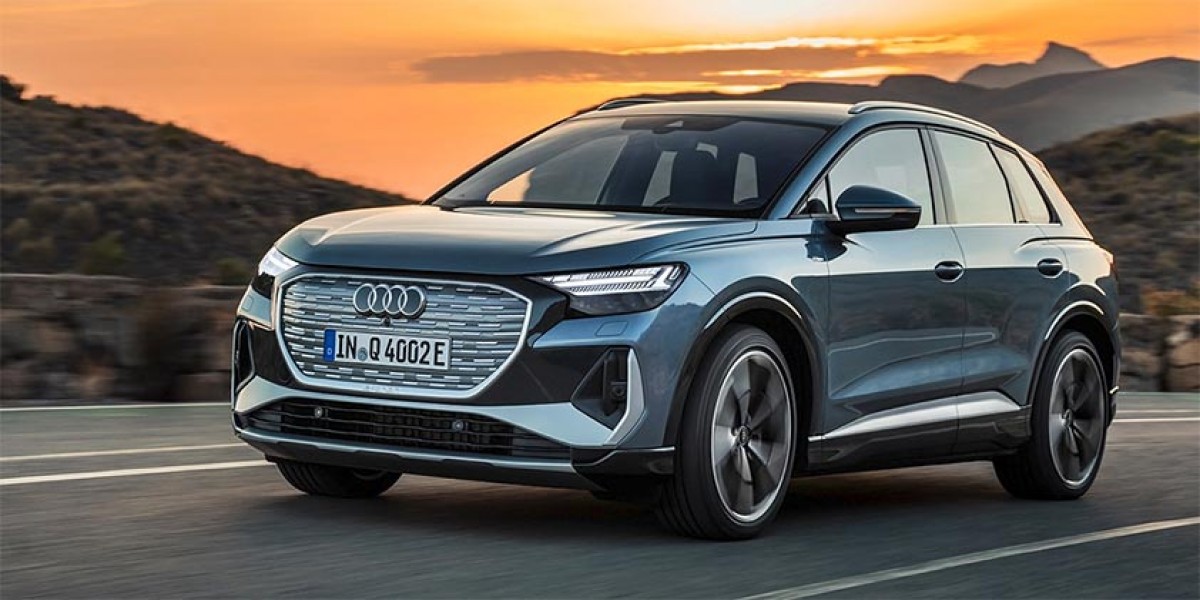57 electric cars range tested at highway speeds - who wins? PART 1
Buying an electric car is not an easy task. It’s not just about picking the right color, different interior, and various options. It’s not even about picking different battery sizes - it’s all about trying to figure out how far, in real-life conditions, the car will actually go. It’s all about trying to peel away the often misleading claims from the manufacturers, and working out the effect the bigger wheels will have on the range. Will the extra options affect the range - and by how much? The list of questions goes on forever.
AutoBild decided to try and answer one of the questions, once and for all - how far can an EV go on the highway? How far will it go at normal highway speed - without hugging the slow lane but instead pushing at steady 130 km/h? It took a while to put the results together, but here they are. Some are no surprise at all, some are a positive surprise, and some are a real disappointment. Without further ado - from the lowest range to the highest, this year’s winners and losers.
57. Mazda MX-30 - 140 km

Not a surprise really that Mazda manages only 140 km, it has a tiny 35.5 kWh battery because the company believes hardly anyone commutes more than 50 km. If that was the case - then why build a crossover in the first place? Wouldn’t a smaller car be a better option? 140 km on a highway for around €36,000 sounds like an expensive adventure, although the city range is claimed to be far more sensible 250 km.
56. Honda e - 153 km

Honda e Advance is the only model currently available in Europe, at €40,000 is not the cheapest car in the test but is one of the best looking for sure. It has the same 35.5 kWh (28.5 kWh usable) battery capacity as the Mazda MX-30, but thanks to its smaller body, it manages to achieve 153 km highway run. Its 113 kW (151 hp) electric motor turns the retro-looking hatchback into a rather nippy mode of transport with 0 to 100 km/h taking only 8.3 seconds.
55. Peugeot e Rifter - 164 km

The family-oriented van with two sliding doors and enough room for a weekend party, Peugeot e Rifter is an electric answer to many people’s dreams. The 50 kWh and 100 kW (134 hp) electric motor working the front wheels is sufficient for pretty much anything that you throw at this van. The highway range at 130 km ends up being only 164 km, but this essentially is a brick on wheels, with some of its corners slightly rounded off. Take it down a notch, and you’ll see the range climb to well over 200 km.
54. Opel Combo e-Life - 171 km

This is Peugeot’s twin - same battery, same motor, same dimensions. And yet the Opel manages to achieve 171 km run, sure - 7 km is not a big deal. That’s until you run out of juice 5 km away from the nearest charging station - pushing this thing along the highway is out of the question. Opel charges €2,000 more for its Combo e-Life than Peugeot asks for the e-Rifter though - is the 7 km difference worth the money?
53. MG 5 - 178 km

The value offer from MG is hard to pass - an electric wagon for less than €36,000 sounds like a bargain. Apart from decent room though, the MG cost-cutting is on display whichever way you turn. The small 50.3 kWh battery managed to deliver 178 km in freezing conditions - the test was conducted when the temperature dropped to -3 C, so that’s not a bad result. The question is - does the €3,000 upgrade to the LR version with 61.1 kWh make sense? It’s a very tempting proposition.
52. Mercedes EQB 350 - 200 km

First Mercedes in the test and the first 4-wheel drive EV. The fairly large SUV has only a 66.5 kWh battery pack, and it shows - the 292 hp (215 kW) power output may be enough to propel it from 0 to 100 km/h in just 6.2 seconds, but those motors need energy. Keeping the EQB at 130 km/h comes at a hefty price, and 200 km range is not impressive. Add to it the €60,000 price tag, and the Mercedes becomes a fairly expensive choice. Keeping it around the city promises up to 495 km of the range, which makes putting up with the EQB a little bit easier.
51. SsangYong Korando e-motion - 203 km

Not a very popular vehicle this one, but nonetheless an interesting choice. It comes with a 61.5 kWh battery pack (56 kWh usable) and a single 188 hp (140 kW) electric motor. At 4,465 mm this isn’t a large crossover, but it’s fairly quick - 8.5 seconds from 0 to 100 km/h is enough for moving swiftly about. At less than €40,000 it can be an attractive proposition as long as you don’t expect to take many highway trips, keep it in the city, and you could see over 400 km of range.
50. VW ID.3 Pro - 216 km

The entry-level ID.3 Pro comes with a 150 kW (204 hp) electric motor supported by a 62 kWh (58 kWh usable) battery. The WLTP rating may be promising 426 km but keeping the electric VW on the highway at 130 km/h cuts that range in half. €40,000 asking price doesn’t make it any easier and to get more mileage out of it, you’ll need to slow down, keeping it in the city may result in a range of over 400 km but there is no hiding from it - speed is electric car’s enemy.
49. Toyota bZ4X - 217 km

Toyota bZ4X is a confusing vehicle - the FWD version comes with a 150 kW (204 hp) electric motor, and the AWD version gets a power hike of only 10 kW (14 hp) despite having two motors. That’s hardly an advantage when you realize the price difference - depending on where you are, it can be as much as €11,000. The two versions share the same 71.4 kWh battery pack, and although the WLTP for the FWD model stands at 513 km, taking the car on the highway ends the run in just 217 km. The AWD would most likely do far worse.
48. MG Marvel R Performance - 221 km

This 288 hp (212 kW) crossover from MG looks decent and on paper, offers great performance - 4.9 seconds from 0 to 100 km/h is not to be sniffed at. The 70 kWh battery with 65 kWh usable capacity promises a 370 km WLTP range, but on a highway that number falls to only 221 km - not as dramatic drop as Toyota’s but 221 km at 130 km/h means only 1 hr and 41 minutes of driving. Is the €52,000 price tag enough to convince buyers this is a good value proposition?
47. Mercedes EQA 250 - 222 km

The Mercedes EQA 250 proves that size does matter - at least when it comes to electric cars. It shares the 79.8 kWh battery (66.5 kWh usable) with the EQB 350 4MATIC, but thanks to EQA’s smaller size, it beats it at the highway test - 222 km versus 200 km. Interestingly, the WLTP for the EQA stands at 417 km while the EQB boasts 420 km - we know the truth now, Mercedes. Smaller EQA wins on the highway, and in the city, it promises to deliver more than 580 km driving range which at just over €50,000 will make many people take a closer look.
46. Cupra Born 170kW - 226 km

Cupra Born is essentially a VW ID.3 wearing fancy Spanish clothes, and somehow, those clothes work. The 58kWh battery pack (total 62 kWh) manages to push the little Spaniard to a 226 km on the highway at a constant 130 km/h while its German sibling runs out of juice 10 km earlier. If you’re after an electric hatchback and VW ID.3 tickles your fancy, you’ll be better off with the hot Spanish Cupra Born - it lasts longer and costs €4,000 less.
45. Volvo XC40 Recharge - 227 km

The FWD version of the Volvo XC40 Recharge comes with a 69 kWh battery pack (67 kWh usable). Its single electric motor churns out 231 hp (170 kW) - that’s as much power as the Cupra but with a much bigger battery. It is disappointing, but not surprising, to see Volvo only manage to squeeze out 227 km. It may be almost the same length as the Cupra Born, but the extra 11 cm in height come to haunt it on the highway.
44. Citroen e-C4X - 235 km

The Citroen e-C4 X is actually a genuine surprise. It has a tiny 50 kWh battery with 45 kWh usable capacity. At 4,600 mm it is not a small vehicle, and yet it manages 235 km on the highway at the constant speed of 130 km/h. It is 20 cm longer than the Volvo XC40, although it sits 12 cm closer to the ground, its battery has 20 kWh less capacity - and yet it beats Volvo. To add some salt to the wound, it costs €37,540, which is €10,000 less than the Volvo.
43. Subaru Solterra - 241 km

How did Subaru Solterra manage to beat its twin Toyota bZ4X is quite a secret - two identical cars with the only difference being their brand badges and names, and yet Subaru comes away with the win. 24 km extra is not a small difference. Especially when we realize that Subaru comes only as the AWD model with two electric motors - that’s more drain for the same 71.4 kWh battery (64 kWh usable) and more rolling resistance - and yet, Toyota loses this one.
42. Opel Zafira e-Life M - 250 km

Another shocker - 4,956 mm long brick on wheels equipped with a tiny 50 kWh battery pack with 46.2 kWh usable capacity manages to outrun other, smaller vehicles with bigger batteries. Testing the Opel at the highway speed of 130 km/h meant running it at its top speed, but the van drove nearly 2 hours which is simply impressive. Interestingly enough, its city range is estimated at 275 km, and its WLTP range is rated at 230 km. Opel Zafira e-Life M is the first electric car to beat its WLTP rating by driving at top speed.
41. Polestar 2 LR AWD - 258 km

The €57,000 Polestar 2 comes with an 82 kWh battery pack and two electric motors. The 421 hp (310 kW) turns the Polestar into a real hoot with a 4.5 seconds sprint from 0 to 100 km/h. And while the WLTP rating stands at hugely respectable 591 km, the story is quite different on the highway. Polestar manages to achieve only 43.6% of its claimed range - 258 km means just under two hours of traveling.
40. Hyundai Ioniq 5 SR RWD - 261 km

The 168 hp (125 kW) Ioniq 5 is a very popular choice, it has decent power, it’s fairly quick at 8.5 seconds from 0 to 100 km/h and its 62 kWh battery promises 400 km of WLTP range. At nearly €42,000 it’s not the cheapest EV out there, but it looks great, and it works really well for many people - as long as you keep it away from the highway. Driving it at 130 km/h means running out of battery after 261 km or two hours. Sure, it’s better than some of its competitors, but it has a huge battery by comparison - it should do better.
39. Aiways U5 - 266 km

Aiways U5 is not a common name, but the vehicle comes with a lot of promises. It starts at just €39,500, and its 150 kW (204 hp) motor linked to a 63 kWh battery (60 kWh usable) suggests decent performance. WLTP rating of 410 km and 7.5 seconds sprint from 0 to 100 km/h paint a very positive picture. And the car impresses on the highway with its 266 km run - better than many more expensive vehicles, and it did the run at -3 C.
38. Renault Megane E-Tech 60 - 268 km

Renault Megane has grown into a full-blown crossover. At 4,210 mm it is no longer the small hatchback we used to associate this name with. The good-looking Frenchman comes with a 60 kWh battery and just one 220 hp (160 kW) electric motor powering the front wheels. At 7.4 seconds from 0 to 100 km/h, the Megan is nippy, and its WLTP rating of 449 km is impressive. Keeping your right foot planted to the floor though, results in 268 km highway run - not bad when compared to others, but still a lot of room for improvement.
37. MG ZS EV - 272 km

Many people choose the MG ZS EV simply because of its attractive €34,400 price. It comes with a 72.6 kWh battery pack which promises 440 km of WLTP certified range. The single electric motor with 156 hp (115 kW) output doesn’t have any problems with the small crossover and makes the MG entertaining to drive. Despite its fairly tall body (1,625 mm), the MG manages a 272 km highway run making it a good value option.
36. Mercedes EQV 300 - 273 km

At first, Mercedes' result seemed impressive. The 5,140 mm long full-size van manages to better many smaller vehicles in a high-speed test. That’s until we look under the floor and find a huge 100 kWh battery pack - if it was possible to squeeze that battery into the Citroen e-C4X, it would have run for nearly 500 km. Still, the Mercedes impresses - it has a WLTP-rated range of 363 km and driving it at 130 km/h results in 273 km - that’s a great result for a small house.
35. BMW iX1 xDrive30 - 274 km

The €55,000 BMW iX1 xDrive30 comes with a 66.5 kWh battery pack which, by comparison to other vehicles in this test, is not that large. The battery is smaller than that in Ioniq 5 or Polestar 2. While the BMW’s WLTP range may not be outright impressive with its 440 km, its high-speed performance speaks a different language. The 274 km achieved at 130 km/h is 16 km more than Polestar 2 with an 82 kWh battery managed, and BMW is good 16 cm taller - not bad BMW, not bad.
34. Kia e-Soul - 280 km

Little Kia hides a secret - and it’s a big one. It has a fairly large, 67.5 kWh battery pack. The 4,195 mm Kia weighs only 1,757 kg which by EV standards is nothing at all. That translates to its 450 km WLTP rating and its fairly small frame helps it in the highway test. At constant 130 km/h Kia managed to run for 280 km or 2 hours and 9 minutes. The downside of the big battery is not just the extra weight, but the extra cost - the Kia e-Soul 64 kWh version starts at just over €42,000, which is a lot of money for a small car.
33. Hyundai Ioniq 5 LR AWD - 290 km

The more powerful version of the Ioniq 5 comes with two electric motors with a combined output of 306 hp (225 kW). It gets a bigger battery as well, and the 72.6 kWh usable capacity helps it achieve 290 km in the highway test. That’s 29 km more than its less powerful version, but at €15,000 extra, the choice isn’t as straightforward as we’d like. Yes, the AWD LR version deals with the 0 to 100 km/h sprint in just 5.2 seconds making it seriously fast but if you are after an electric car that goes the distance - you may wanna think twice about this one.
32. Renault Zoe E-Tech - 292 km

Little Zoe has been around since 2019, and it still has plenty of energy to surprise much newer competitors. The 100 kW (136 hp) Zoe comes with a 54.7 kWh battery pack (52 kWh usable). Its WLTP rating of 385 km is impressive for a small 4 m hatchback, but it is its high-speed performance that attracts our attention - 292 km from a 52 kWh battery pack? That is some black magic right there, good on you Zoe!
31. BMW i4 M50 - 299 km

BMW i4 gets very close to the 300 km mark, but it’s not a surprise - it has an 83.9 kWh battery pack with 80.7 kWh usable capacity. It has a drag coefficient of 0.24, and it has proven before it can drive further than its official rating. Well, this time it didn’t manage to get even close to its WLTP rating of 509 km, but 299 km at 130 km/h is a decent number. Is it decent enough to convince you to part with €70,800?
30. VW ID. Buzz Pro - 301 km

The VW ID. Buzz Pro is the first EV in this test to achieve more than 300 km. The Pro version comes with a single 150 kW (201 hp) electric motor coupled with an 82 kWh battery (77 kWh usable). Its WLTP rating of 420 km is not that high, but this is a large van after all. Its highway test result is surprisingly better than that of many much smaller competitors. There is one catch though - the ID. Buzz starts at nearly €65,000. Its long-wheelbase version has just been unveiled, and it comes with a bigger battery - it should perform even better, but at what price?
29. Kia EV6 LR AWD - 305 km

The more aerodynamic-friendly cousin of the Ioniq 5 proves it’s all in the curves. Kia’s WLTP rating of 506 km is already higher than Ioniq 5’s but its high-speed highway run puts all doubts aside - 305 km at 130 km/h cuts the range by 40% and beats the Ioniq 5 LR AWD by 15 km. At €52,890 Kia is over €3,000 cheaper as well.
28. Skoda Enyaq iV 80 - 318 km

Skoda Enyaq iV80 is a medium-sized SUV, it actually is as sling as the Kia EV6, it’s only {5 cm}} taller - but the two vehicles couldn’t look more different. Their usable battery capacity is almost identical as well - Skoda has 77 kWh, and Kia comes with 77.4 kWh. So it is a huge surprise to see Skoda fly past Kia and go on to 318 km. The Skoda has only one electric motor that drives only rear wheels, and this can be the secret sauce here - less power, less performance but in the end, more range. Skoda has another advantage - it’s priced at €49,500.
27. Audi Q4 e-tron 40 - 326 km

Skoda’s posh Audi cousin comes with the same underpinnings - the same RWD powertrain with a 204 hp (150 kW) electric motor hooked up to the same 82 kWh battery with 77 kWh usable capacity. Both cars accelerate from 0 to 100 km/h in about 8.5 seconds, and yet Audi has a lower WLTP rating of 520 km. That didn’t stop it from beating Skoda at the highway speed test and it recorded 326 km. As expected, Audi is more expensive but the difference isn’t huge - an extra €2,400 for the Audi badge sounds like a reasonable cost.
26. Kia Niro EV - 326 km

The new Kia Niro EV performed surprisingly well in the test. It proves that the battery technology moves on rather quickly, and buying newer electric cars makes a lot of sense. Despite having a 64.8 kWh (usable) battery pack, the compact crossover comes with a WLTP rating of 463 km, and during the 130 km/h test, it managed to go on for an impressive 326 km. At €47,600 Kia Niro EV may not be as cheap as other compact crossovers, but when it comes to driving range - it delivers.
This is it - this is the end of the first part of the Highway Speed Range Test. The second part, where we look at the top 25 electric vehicles and how far they can go at 130 km/h is right here - there are few surprises, few expected names, and the winner takes a leap in battery performance and delivers a staggering result.
Reader comments
- Yuppi
- 64i
Test was done in June 2023. Unfortunately, they did not test the #1 selling car in the world (Tesla Model Y). Not only has the Model Y more recently gotten an extended range version, but battery tech/chemistry has improved at manufacturing places lik...





Facebook
Twitter
Instagram
RSS
Settings
Log in I forgot my password Sign up